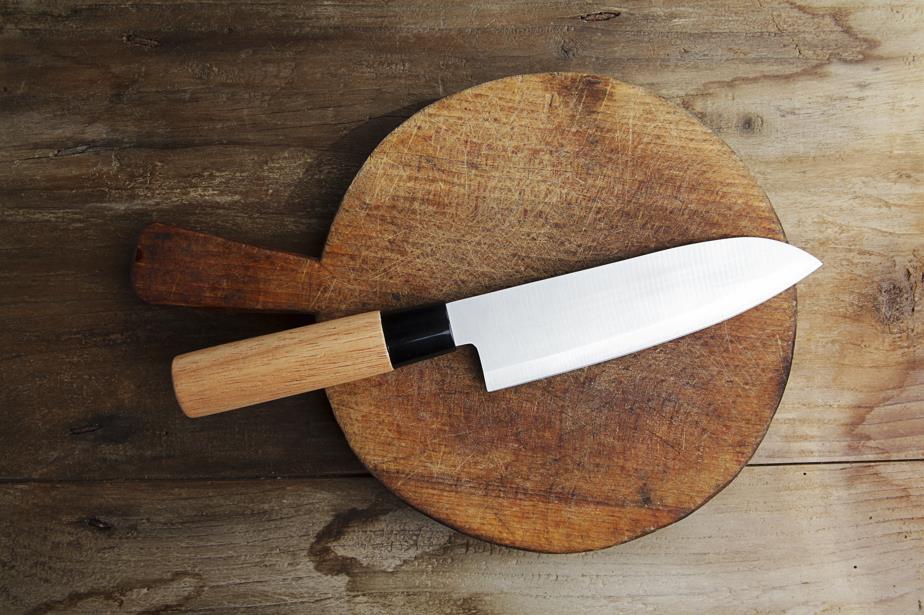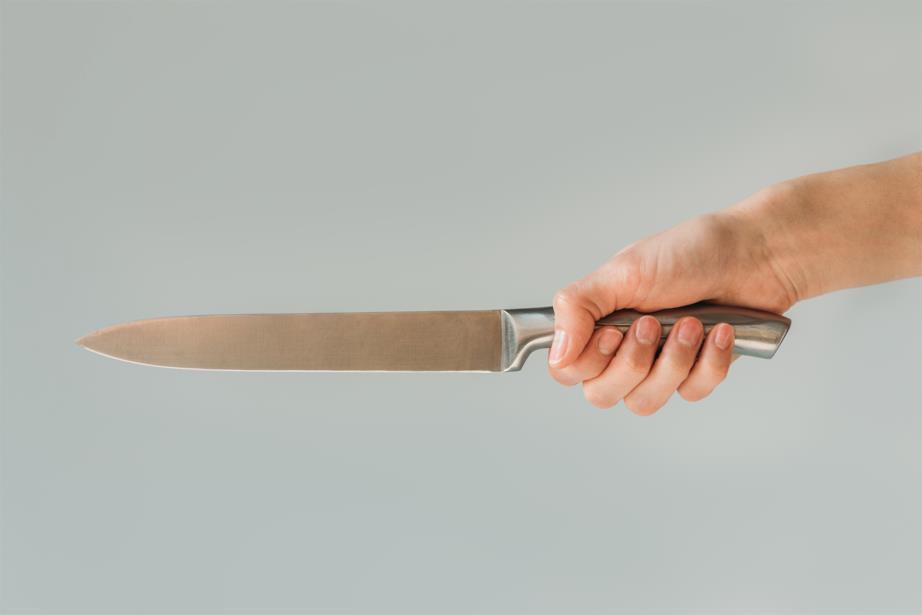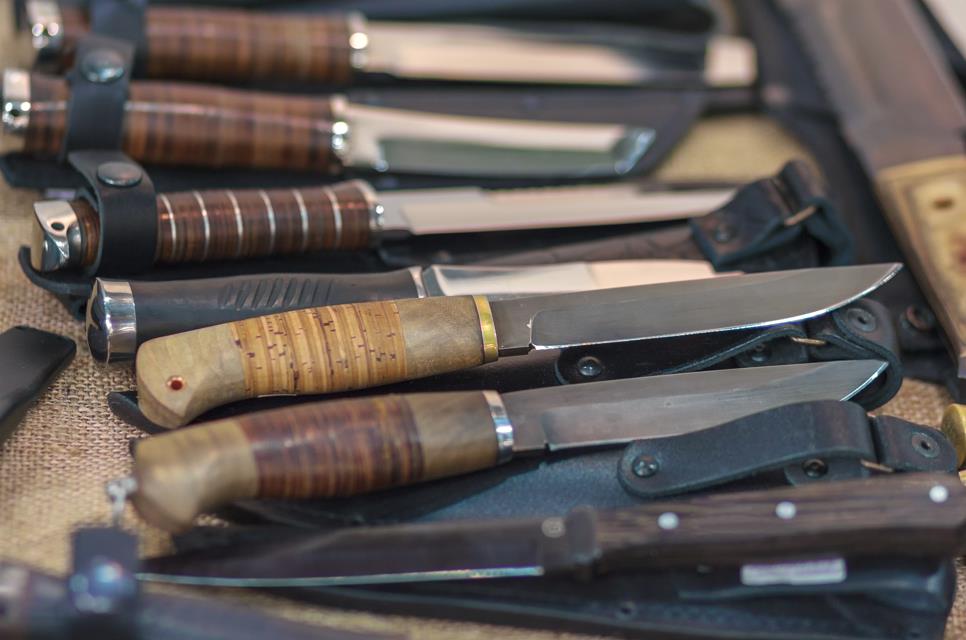There is a lot to consider when shopping for a kitchen knife and you can’t get away from this dilemma: carbon steel vs stainless steel.
As the name revealed, carbon steel generally has a higher amount of carbon in its composition. While stainless steel constitutes an additional 10.5% or more chromium. The two elements contributes different properties to a steel, thus creating the dilemma.
So, we come in handy in understanding the main differences between them and making the choice easier for you.
Table of contents
What is carbon steel?

Steel, for millennia, has been mankind’s treasure. Steel production goes a long way back to 4000 years ago when it began to see light across the globe. And today, steel is still the mother of all alloys, boasting a wide range of household and industrial applications.
Of all steel types, carbon steel is the most superior group of steel which takes up nearly 90 percent of all steel production. Simply put, it’s the most significant steel alloy with the highest carbon content.
Carbon steel beats other steel grades when it comes to hardness but corrodes fast, which is one of its daunting downsides. We can say that carbon steel is a blessing in disguise owing to the innumerable benefits the world relishes.
On a bigger spectrum, carbon steel is characterized by a concentration of carbon ranging from 0.05% to 2%. There may be other elements in combination incidentally, often manganese, because of the manufacturing processes of carbon steel.
That variation of carbon content gives rise to the different carbon steel types; high carbon steel, medium carbon steel, and low carbon or mild steel.
High carbon steel is the most preferred for making knives and other cutting tools. Actually, most high-end knives are carbon steel knives because carbon steel is the hardest of all steel, hence sharper with high edge retention.
If a knife is made of low-carbon steel, then it’s majorly because the costs of production are lower, and, in turn, the prices are lower too. But at the expense of the blade life, maintenance costs, and the performance of the knife.
What is stainless steel?

Stainless steel is also a popular material type for knives apart from carbon steel. Just from the word stainless, it’s a class of steel highly resistant to rust due to the additional chromium content.
That amount of chromium in alloying is essential such that it’s the force behind the formation of a protective layer against rust and corrosion. The more the reason stainless steel is common in culinary uses and chemical plants as a strategy to minimize any possible contamination from rust. As a matter of fact, it’s also easier to maintain, even in wet environments.
Carbon steel vs. stainless steel knives
Controversies on both carbon steel and stainless steel are there to stay, as every individual believes they understand their personal preference in the kitchen, and knives are no exception.
But what about a novice culinarian, finding it challenging to make a selection out of the two most common knife materials? They deserve to know the truth, too, right? These ensued aspects below explain the fundamental basics to consider.
Handpicked for you
True cutting power in the palm of your hand
Maintenance
No carbon steel knife suits a reckless and lazy person in the kitchen.
Once you own it, you have no choice but to treat it with utmost care to maintain its performance and sharpness, making it high-maintenance steel.
Carbon steel knife is more susceptible to rust and corrosion if exposed to wet conditions. Rust weakens, dulls, and renders knives useless if not dealt with in good time. So it forces you to dry it as soon as you’re done using and cleaning it.
Additionally, carbon steel is brittle steel, and washing it with a dishwasher is never a good idea as it’s more likely to break piece by piece than to bend.
Conversely, stainless steel needs little care and maintenance since it’s almost rustproof.
Performance
The degree of hardness determines whether stainless steel or carbon steel cuts finer in terms of precision. At this point, we are both aware that carbon steel has a higher carbon content than stainless steel, which makes it harder and more robust.
All in all, most professional chefs would still go for carbon steel knives because they yearn for a fine precision in cutting as they try to actualize their culinary artistry. And such an ability is way beyond stainless steel knives.
Carbon steels are much easier to hone to great sharpness and retain a razor edge sharpness the longest due to the high hardness property. The harder the steel, then the longer the edge retention.
Price
If there’s one factor to prioritize when buying any knife, then that is the price. If you cannot afford one, the other factors to be considered pointless.
Looking at the market prices, you’ll find more high-end kitchen knives made of high carbon steel rather than stainless steel. Higher performance often comes with a higher price, but beware, the reverse does not necessarily hold true.
Which one should you pick, carbon or stainless steel?

First, you need to understand that none is better than the other. Both stainless steel and carbon steel can make very useful knives. What one may feel like a good kitchen knife material for you may not be the same for another person. Even bladesmiths have different opinions on what steel is best for their knives.
Based on the differences between stainless steel and carbon steel, you can easily decide which material works best for you. And to help you further, here is a summary in the form of the pros and cons of each, starting with carbon steel.
Carbon steel
Pros
- High wear resistance
- Great strength and sharpness
- Long edge retention
Cons
- Highly prone to rust and corrosion
- More brittle and prone to chip
Stainless steel
Just like carbon steel, stainless steel has both its advantages and disadvantages. You realize that if you reverse the disadvantages of one, it becomes the advantages of the other. And at the same time, they all depict the key nuances between the two.
Pros
- Rust and corrosion resistance
- Easy to clean and maintain
- More durable to withstand harder tasks
Cons
- Blade edges dull fast
- Reduced toughness and sharpness
Which are the other types of steel?
While stainless steel and carbon steel have been the core focus of this article, it does not suggest these are the only steel classifications.
According to the American Iron and Steel Institute, apart from carbon steel and stainless steel, which are the most prevalent in kitchen knife use, there are two more steel classifications, namely, alloy steel and tool steel, which are based on the carbon range.
Tool steels form machinery and tools such as hammers, whereas alloy steels are common in the make-up of bars, rails, wires, and most structural sections.
Final words
In the end, carbon steel vs stainless steel knife is a choice between maximum performance and easy maintenance.
If you are not willing to take the extra steps to clean and dry your knife immediately after use, then a stainless steel knife is your answer. A high-quality one is more than enough for most of your kitchen needs.
If you treat cooking like art or would like to upgrade your cutting experience, you should try a high carbon steel knife for yourself.
Feel free to visit our store for high carbon steel handmade knives. Your knife needs are our prime concern, and we always have something for everyone.












